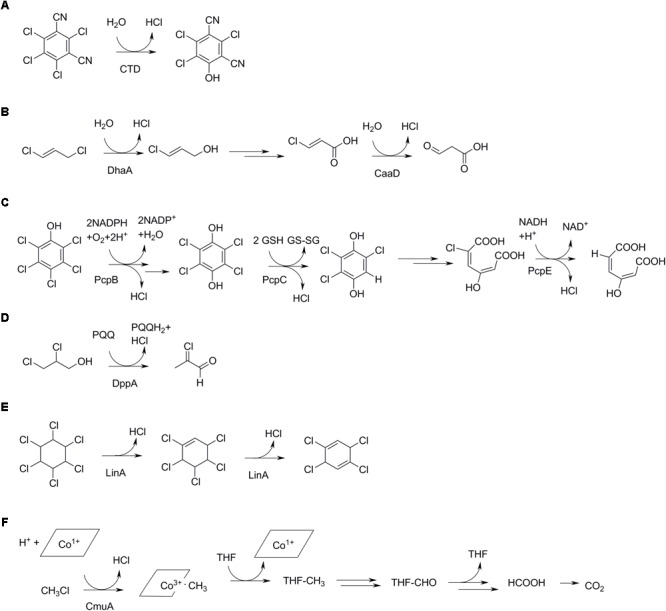FIGURE 4.

Productive routes for utilization of selected organochlorine compounds in bacteria. (A) Initial step in chlorothalonil degradation, catalyzed by a dehalogenase (CTD) (Liang et al., 2011). (B) 1,3-dichloropropene degradation by Pseudomonas pavonaceae (Poelarends et al., 1998). The initial dehalogenase (DhaA) is found in haloalkane-degrading bacteria from different geographic regions, whereas the second dehalogenase (CaaD) is unrelated and rare (Poelarends et al., 2000). (C) Pentachlorophenol metabolism by an initial monooxygenase (PcpB) reaction and two reductive reactions, the first one (PcpC) involving a glutathione transferase, and the second one (PcpE) involving an NADH-dependent reductase (Kiefer and Copley, 2002; Hlouchova et al., 2012). (D) Degradation of 2,3-dichloropropanol via the highly reactive intermediate 2-chloroacrolein (Arif et al., 2012). (E) The insecticide hexachlorohexane undergoes two initial dechlorinations by elimination by a dehalogenase (LinA). (F) Aerobic methylchloride metabolism involving a corrinoid cofactor of the methyltransferase (CmuA) and tetrahydrofolate (THF) as methyl acceptor (Stourman et al., 2003).
